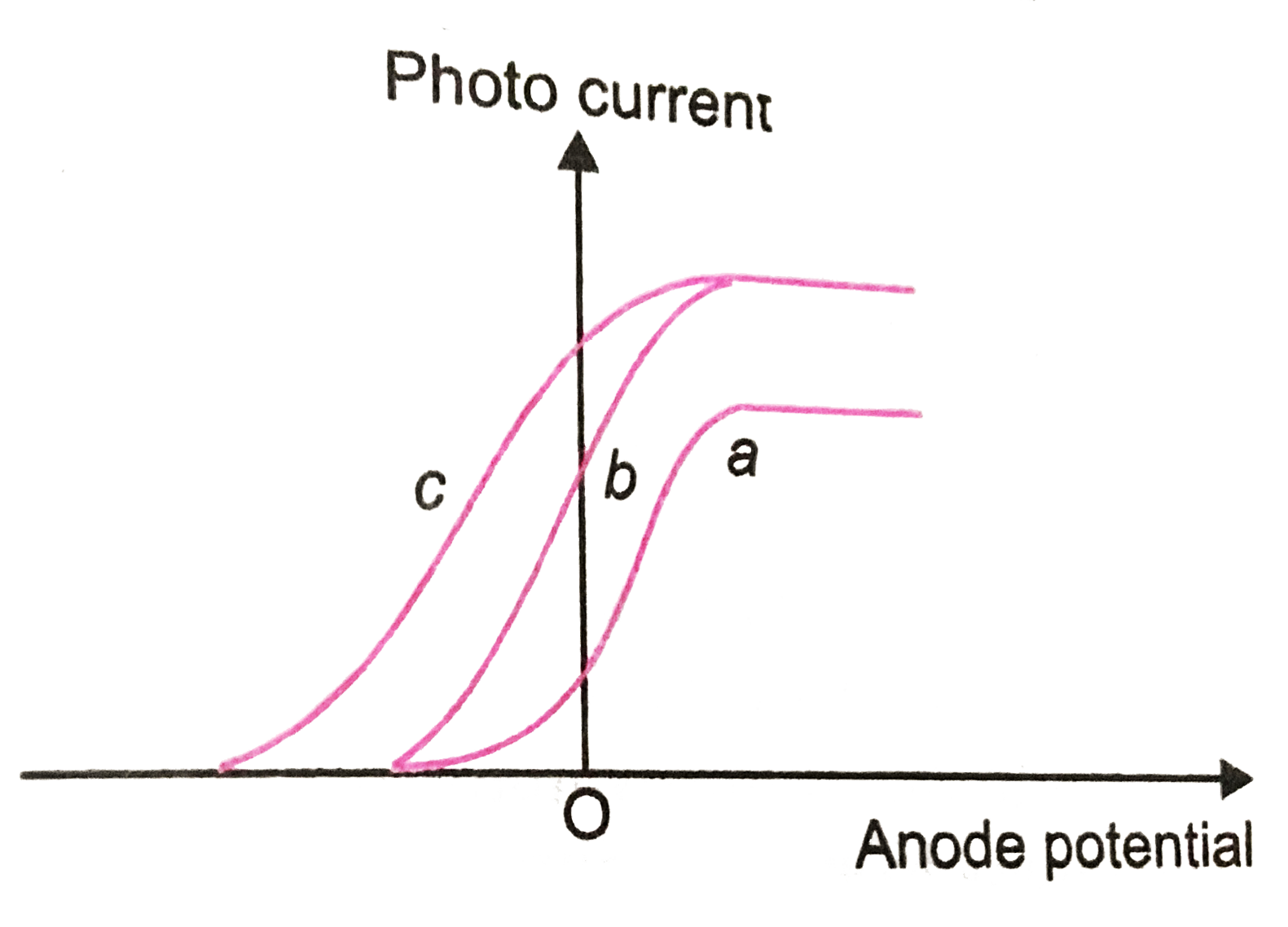Complete Solutions to Physics of chapter DUAL NATURE OF MATTER AND RADIATION of Class 12 book with complete answers and questions
| Class 12 | PHYSICS |
| Chapter | DUAL NATURE OF MATTER AND RADIATION |
| DISHA | Physics |
| Number Of Questions | 30 |
| Academic Year | 2023-24 |
Energy of a `alpha-` particle, having de broglie wavelenght of 0.004 `overset(@)A` is approximately.
View SolutionVelocity of a proton is c/20. Associated de-Broglife wavelenght is (Take `h=6.626xx10^(-34)J-s`)
View SolutionOne electron `&` one proton is accelerated by equal potential. Ratio of their do-Broglie wavelenght is-
View Solutionde-Brogile wavelength of an electron is `10 overset(@)A` then velocity will be-
View SolutionOne electron `&` one proton have equal energies ten ratio of associated de-Broglie wavelength will be-
View SolutionA proton and deuteron are accelerated by same potential difference.Find the ratio of their de-Broglie wavelengths.
View SolutionIn photoelectric effect if the intensity of light is doubled then maximum kinetic energy of photoelectrons will become
View SolutionName the phenomenon which shows the quantum nature of electromagnetic radiation.
View SolutionFrom rest an electron is accelerated between two such points which has poteintial 20 `&` 40 volts respectively. Associated de-Broglie wavelength of electron is-
View SolutionAn electron microscope uses 40 KeV electrons. Find its resolving limit on the assumption that it is equal to the wavelenght of the electrons-
View SolutionA hydrogen atom moving at a speed v absorbs a photon of wavelength 122 nm and stops. The value of v is (mass of hydrogen atom `=1.67xx10^(-27)` kg)
View SolutionThe de-Broglie wavelenght of an electron is `0.2 overset(@)A`. Calculate the potential difference (approximate) requrired to retard it to rest-
View SolutionA photon and an electron have equal energy `E . lambda_("photon")//lambda_("electron")` is proportional to
View SolutionIn a photoemissive cell, with exciting wavelength `lambda`, the faster electron has speed v. If the exciting wavelength is changed to `3lambda//4`, the speed of the fastest electron will be
View SolutionWhich of the following figure represents the variation of particle momentum and the associated de - Broglie wavelength ?
View SolutionThe work function for the surface of aluminium is 4.2 eV. What will be the wavelenght of that incident light for which the stopping potential will be zero.
`(h=6.6xx10^(-34)J-se=1.6xx10^(-19)C)`
View SolutionSlope of `V_(0)-v` curve is-
(where `V_(0)=` Stopping potential and v=frequency)
View SolutionAn AIR station is broadcasting the waves of wavelength `300 metres`. If the radiating power of the transmitter is `10 kW`, then the number of photons radiated per second is
View SolutionA metal surface of work function `1.07 eV` is irradiated with light of wavelength `332 nm`. The retarding potential required to stop the escape of photo - electrons is
View SolutionThe fig. shows the variation of photon current with anode potential for a photo-sensitive surface for three different radiation. Let `I_(a), I_(b) and I_(c)` be the intensities and `f_(a), f_(b) and f_(c)` be the frequency for the curves a,b and c respectively.

View SolutionAn electromagnetic radiation of frequency `3xx10^(15)` cycles per second falls on a photo electric surface whose work functions is 4.0eV. Find out the maximum velocity of the photo electrons emitted by the surface.
View SolutionUltraviolet light of wavelenght 280 nm is used in an experiment on photo electric effect with lithium `(phi=2.5eV)` cathode.
(1) The maximum kinetic energy is 1.9eV
(2) The stopping potential is 1.9V
(3) The maximum kinetic energy is 4.4 V
(4) The stopping potential is 4.4. eV
View SolutionThe separation between Bragg's planes in a crystal is `10overset(@)A`. Then the wavelenght of those X-rays which can be diffracted by this cystal is-
(1) `5 overset(@)A` (2) `10 overset(@)A`
(3) `20 overset(@)A` (4) `25overset(@)A`
View SolutionElectrons are accelerated in television tubes through potential difference of about 10 KV.
(1) The lowest wavelength of the emitted X-rays is `12.4 overset(@)A`.
(2) The lowest wavelength of the emitted X-rays is `1.24 overset(@)A`
(3) The highest frequency of the emitted X-rays is `2.4xx10^(8)Hz`
(4) The higher frequency of the emitted X-rays is `2.4xx10^(18)Hz`
View SolutionA physicist wishes to eject electrons by shining light on a metal surfac. The light source emits light of wavelenght of 450 nm. The table lists the only available metals and their work functions.
`{:("Metal",W_(0)(eV)),("Barium",2.5),("Lithium",2.3),("Tantalum",4.2),("Tungsten",4.5):}`
Which metal(s) can be used to produce electrons by the photoelectric effect from given source of light?
View SolutionA physicist wishes to eject electrons by shining light on a metal surfac. The light source emits light of wavelenght of 450 nm. The table lists the only available metals and their work functions.
`{:("Metal",W_(0)(eV)),("Barium",2.5),("Lithium",2.3),("Tantalum",4.2),("Tungsten",4.5):}`
Which option correctly identifies the metal that will produce the most energetic electrons and their energies?
View SolutionA physicist wishes to eject electrons by shining light on a metal surfac. The light source emits light of wavelenght of 450 nm. The table lists the only available metals and their work functions.
`{:("Metal",W_(0)(eV)),("Barium",2.5),("Lithium",2.3),("Tantalum",4.2),("Tungsten",4.5):}`
Suppose photoelectric experiment is done separately with these metals with light of wavelenght 450 nm. The maximum magnitude of stopping potential amongst all the metals. is-
View SolutionAssertion : Mass of moving photon varies inversely as the wavelength .
Reason : Energy of the particle `= Mass xx (Speed of light)^(2)`
View SolutionAssertion : Photosensitivity of a metal is high if its work function is small.
Reason : Work function `= hf_(0)` where `f_(0)` is the threshold frequency.
View SolutionAssertion : The de - Broglie wavelength of a molecule varies inversely as the square root of temperature.
Reason : The root mean square velocity of the molecule depends on the temperature.
View Solution
Physics questions and complete solutions for chapter DUAL NATURE OF MATTER AND RADIATION of DISHA PHYSICS (HINGLISH) of Class 12